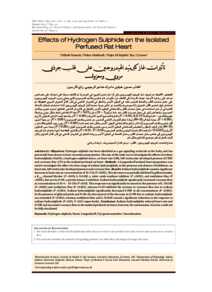Document
Effects of microplastics on the gastrointestinal tract and gut microbiome of Sprague Dawley rats.
Identifier
DOI:10.53539/squjs.Splisspp1-9
Source
Sultan Qaboos University Journal for Science, v. 29, no. 2, p. 1-9.
Contributors
Ba-Omar, Taher Ahmed., Author
Barry, Michael John., Author
Al-Habsi, Aziz., Author
Abed, Raeid Mahmoud Mohamed., Author
Other titles
أثير اللدائن الرقيقة من البلاستيك على الجهاز الهضمي وميكروبيوم معدة جرذان سبراجو داولي.
Country
Oman
City
Muscat
Publisher
College of Science, Sultan Qaboos University.
Gregorian
2024-08-16
Language
English
English abstract
Humans are commonly exposed to microplastics (MPs) via food. However, relatively little is known of their effect on the tissue of the gastrointestinal tract and the gut microbiome. In this study, adult male rats were fed with different concentrations (0 to 1000 μg/day) of polyethylene MPs mixed with standard pellet food for 24 days. At the end of the experiment, rats were euthanized and histopathological investigation using light and electron microscopy was performed. The gut microbiome was analyzed using MiSeq 16S rRNA amplicon sequencing. Microscopic analysis revealed a significant impact of MPs on the intestine, including visible changes to the crypt area and reduction in mucus secretion. Autophagic vacuoles were observed in the livers of the rats fed with MPs at 100 µg/day. Oxidative stress was evident in rats fed with 1000 µg/day of MPs, indicated by the presence of myeloid bodies in both intestinal and hepatic cells. The gut microbiome was also affected by MPs. Although no distinct clusters were observed in the different treatments by multidimensional scaling (NMDS). The diversity indices including operational taxonomic unit (OTU) richness and Chao1 exhibited an increasing trend with increasing MPs concentration. Pearson correlations revealed a linear increase in the relative abundance of Clostridia (R = 0.036, p = 0.003) with increasing MPs concentration. Lactobacillus faecis was the most abundant OTU in the entire dataset, and its relative abundance decreased significantly with increasing MPs concentration. This study demonstrates that MPs can disrupt cellular function and disturb microbiome balance, and in the event of prolonged exposure, organisms might experience harmful effects.
ISSN
Online: 2414-536X
Print: 1027-524X
Arabic abstract
تعرضت الحيوانات للدائن الرقيقة من البلاستيك عن طريق الطعام، ومع ذلك، لا يوجد الكثير من المعلومات المعروفة عن تأثيرها على أنسجة الجهاز الهضمي وميكروبيوم الأمعاء. في هذه الدراسة، تم تغذية ذكور الجرذان البالغة بتركيزات مختلفة (0 إلى 1000 ميكروغرام / يوم) من البولي إيثيلين الممزوج بأطعمة قياسية لمدة 24 يومًا. وفي نهاية التجربة، تم القتل الرحيم للجرذان وتم إجراء فحص الأنسجة المرضية باستخدام المجهر الضوئي والإلكتروني. وتم تحليل ميكروبيوم الأمعاء باستخدام تسلسل MiSeq 16S rRNA amplicon. كشف التحليل المجهري عن تأثير كبير للجرذان التي تم تغذيتها بالجسيمات البلاستيكية، بما في ذلك التغيرات المرئية في منطقة القبو وانخفاض إفراز المخاط. وقد لوحظ وجود فجوات ذاتية الالتهام في كبد الجرذان التي تم تغذيتها بـ 100 ميكروغرام / يوم. وكان الإجهاد التأكسدي واضحًا في الجرذان التي تم تغذيتها بـ 1000 ميكروغرام / يوم من البروتينات، وهو ما يشير إلى وجود الأجسام النخاعية في كل من الخلايا المعوية والكبدية. كما تأثر الميكروبيوم المعوي أيضًا بالأعضاء البرلمانية. على الرغم من عدم ملاحظة أي مجموعات متميزة في التصنيف المعالجات المختلفة عن طريق القياس متعدد الأبعاد (NMDS). أظهرت مؤشرات التنوع بما في ذلك ثراء وحدة التشغيلية (OTU) وChao1 اتجاهًا متزايداً مع زيادة تركيز الجسيمات البلاستيكية. ولقد كشفت ارتباطات بيرسون عن زيادة خطية في وفرة التسلسل النسبي لكلوستريديا (R = 0.036, p = 0.003) مع زيادة تركيز الجسيمات البلاستيكية. كانت Lactobacillus faecis الأكثر وفرة في مجموعة البيانات بأكملها، وانخفضت وفرتها النسبية بشكل ملحوظ مع زيادة تركيز اللدائن البلاستيكية. أظهرت هذه الدراسة أن الجسيمات البلاستيكية يمكن أن تعطل الوظيفة الخلوية وتخل بتوازن ميكروبيوم الأمعاء، وفي حالة التعرض لفترات طويلة، قد تواجه الكائنات الحية تأثيرات غير متوقعة.
Category
Journal articles

